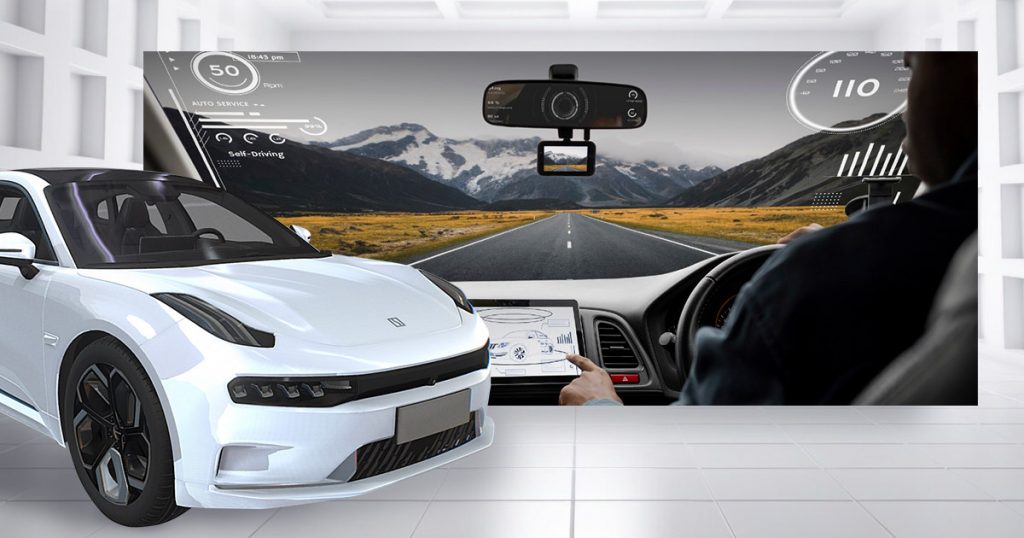Self-driving cars used to sound like science fiction. Now they’re on the streets in cities like San Francisco, Phoenix, and Austin. Still, one question keeps coming up: Are self-driving cars safe? If you’ve seen headlines about robotaxis crashing or getting stuck in traffic, it’s easy to be skeptical.
But here’s the bigger picture: autonomous vehicles are already safer than most human drivers in many situations. A 2025 peer-reviewed study analyzing 56.7 million miles of Waymo’s rider-only operations found that their autonomous vehicles had 96% fewer injury-involving intersection crashes and 85% fewer crashes with suspected serious or worse injuries compared to human drivers.
That stat alone is a big deal. And it’s just one reason these cars are changing the game. Below are nine key reasons why self-driving cars are safe, and getting safer every day.
1. They Don’t Text, Drink, or Get Distracted
Human error is the root of 94% of crashes, according to the NHTSA. Most of those are due to distractions, phones, fatigue, or impaired driving. Self-driving cars don’t have those problems. They’re always focused, always alert, and not trying to eat a sandwich while merging.
This is one of the biggest advantages autonomous vehicles have over human drivers. They’re simply more consistent.
2. They Follow Traffic Rules 100% of the Time
Speed limits, stop signs, lane markings, humans often bend or break these rules. Autonomous cars don’t. If a car is programmed to stop at every red light and yield to every pedestrian, it drastically reduces risky behavior on the road.
So if you’re wondering how safe are self driving cars, start by looking at how well they follow the rules. Spoiler: they’re better than most of us.
3. They React Faster Than Humans
Even the most alert human driver has a reaction time. Self-driving systems respond instantly to obstacles, changes in traffic, or sudden braking. They’re constantly scanning in all directions using Lidar, radar, cameras, and sensors.
That kind of 360-degree awareness isn’t something a human can replicate. It makes a big difference in preventing crashes, especially on highways where reaction times are critical.
4. They Use Real-Time Data and AI to Learn
Autonomous cars aren’t just reacting in the moment; they’re learning from every drive. Companies like Waymo and Tesla feed billions of miles of data into their systems. Each close call or traffic situation helps the system improve over time.
That means every self-driving car is backed by a collective memory way beyond one human’s driving experience. It’s an evolving network of shared intelligence.
5. They Avoid Aggressive Driving
No tailgating. No road rage. No cutting people off just to beat a red light. Self-driving cars are programmed to drive defensively, not aggressively. That alone removes a huge chunk of the risk on the road.
Think about it: most dangerous driving happens when someone’s in a hurry or being careless. AVs don’t have moods, so they don’t make impulsive decisions.
6. Their Sensors See More Than You Can
Humans rely on their eyes and mirrors. Self-driving cars use multiple high-resolution cameras, radar, and Lidar. They can see things in low light, through fog, and even around some corners.
This gives them an edge in spotting hazards early, whether it’s a stalled car up ahead or a pedestrian stepping into the street at night.
So when someone asks are driverless cars safe, this kind of visibility is part of the reason the answer is leaning toward yes.
7. They’re Built with Backup Systems
Self-driving cars are designed with layers of safety. If the main steering system fails, there’s a backup. If the computer glitches, there’s redundancy. These fail-safes are baked into the system so one small issue doesn’t turn into a disaster.
Compare that to a human driver who might fall asleep or suffer a medical emergency. With AVs, there’s always a Plan B.
8. They’re Tested in Simulations Millions of Times
Before they even hit public roads, autonomous cars go through intense virtual testing. Companies simulate millions of edge cases, pedestrians darting out, sudden brake checks, icy roads, to make sure the car knows what to do.
These simulations are faster and more thorough than real-world testing. They help spot flaws and build smarter, more reliable systems.
9. Their Crash Data is (So Far) Promising
Waymo has driven over 50 million miles with a strong safety record. A 2023 report from the company showed that their fully driverless cars had zero fatalities and lower crash rates than human drivers in similar conditions.
Yes, accidents do happen, and yes, no system is perfect. But if you’re asking are self driving cars safer than humans, the numbers are already starting to say yes, especially when it comes to serious crashes.
It’s Still a Work in Progress
No one’s saying self-driving cars are flawless. There have been bumps in the road, literally and figuratively. But compared to human drivers, they offer serious advantages in awareness, consistency, and decision-making.
The key thing to remember is that these systems are designed to remove human mistakes, which are the top cause of accidents. As the technology improves and regulations catch up, we’ll likely see fewer deadly crashes and safer roads overall.
So the next time someone asks are self driving cars safe, you’ve got the answer: They’re safer than most human drivers in most situations, and getting better every day.
